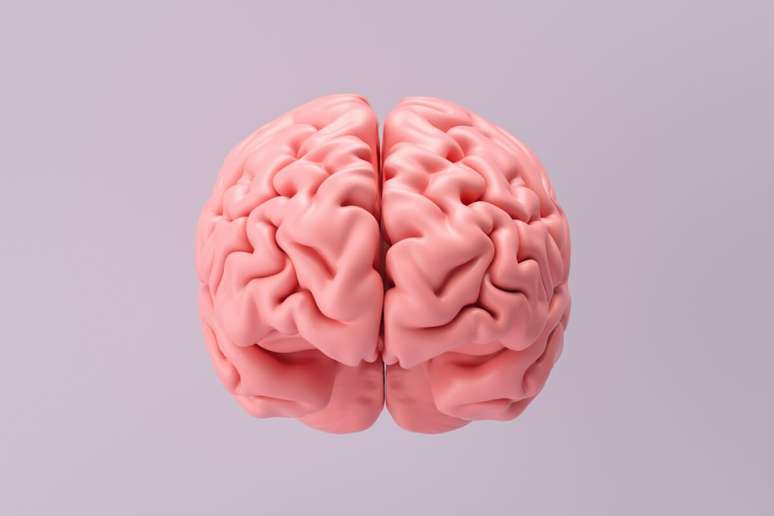In this condition, offensive or socially unacceptable words are involuntarily uttered
Tourette syndrome, also known as “Gilles de la Tourette disease”, is a nervous system disorder that involves involuntary motor tics, which include blinking, frowning, shaking the head, twitching muscles, among others. However, what makes the syndrome known are involuntary vocalizations, also called “coprolalia”, which can cause the formation of offensive or socially unacceptable words.
According to neuroscientist Dr. Fabiano de Abreu Agrela Rodrigues, involuntary swearing in Tourette syndrome can be understood as a neural reflection of thoughts or impulses that we all have, but which we normally manage to suppress. However, for patients, this ability to control is compromised, exposing the stark face of the human condition.
Causes of the oath
Dr. Fabiano de Abreu’s theory suggests that coprolalia is not random. It emerges from a brain in which the inhibition mechanisms are dysfunctional. “All of us, at some point, experience thoughts of anger or frustration, often accompanied by words that we would never dare say in public. In Tourette syndrome, these words escape us because the brain “brake”, located in the prefrontal cortex, cannot function properly,” he explains.
This idea is supported by studies that associate coprolalia with dysregulation of the cortico-striato-thalamic-cortical circuit, a neural network that controls impulses and regulates social behavior. Changes in the basal ganglia and orbitofrontal cortex, two regions critical for behavioral control, are also directly linked to the condition.
Role of the brain and neurotransmitters
In Tourette syndrome, chemical imbalance in the brain plays a central role. Dopamine, the neurotransmitter responsible for regulating movements and impulses, is overactive in patients with this condition, facilitating the expression of tics. Other substances, such as GABA, which inhibits neuronal responses, and serotonin, which modulates mood, also show changes.
Furthermore, the prefrontal cortex, divided into subregions such as the dorsolateral, ventromedial, and orbitofrontal cortex, plays a crucial role. It acts as a “filter”, preventing inappropriate impulses from being verbalized. In patients with Tourette’sthis filter is weakened, allowing the pulses to reach the surface.

Relationship of coprolalia to human behavior
The theory that coprolalia might be a reflection of what we repress forces us to reflect on the nature of human thoughts. Why do we think of hostile words or actions, even without clear reasons? According to Dr. Fabiano de Abreu, these impulses are part of human emotional dynamics, rooted in regions of the brain such as the limbic system, which processes intense emotions such as anger and frustration.
“What differentiates people with Tourette syndrome from others is not the presence of these thoughts, but the inability to control them. We all have impulses, but we have an efficient inhibitory system, driven by the prefrontal cortex, which prevents them from occur. They become words or actions. In the case of Tourette syndrome, the filter fails, letting insults escape,” explains the neuroscientist.
This idea not only demystifies coprolalia, but also puts it into a more human context, demonstrating that the line between control and disinhibition can be thin. “What Tourette shows us is that we are all impulsive on some level. The difference is control. While most of us can contain our impulses, those with Tourette are exposed to their vulnerability in a visceral way. challenges us to look at them with more empathy and less judgement”, says the expert.
Wcomplexity of coprolalia
Despite being widely associated with Tourette syndrome, coprolalia is a rare manifestation, with a prevalence of less than 20% of cases. Studies indicate that it occurs more frequently in patients with more severe symptoms and comorbidities such as obsessive-compulsive disorder (OCD) and attention deficit hyperactivity disorder (ADHD). Coprolalia also often occurs during adolescence, a period in which brain control circuits are developing.
Coprolalia is not limited to offensive words. It can include repetitive phrases or sounds with a strong emotional charge, highlighting the role of the limbic system and the orbitofrontal cortex in the choice of these vocalizations.
Importance of awareness and treatment
For Dr. Fabiano de Abreu, understanding coprolalia as an involuntary neurological symptom is essential to combat stigma and promote inclusion of people with Tourette syndrome. “Swearing does not reflect the person’s personality or values, but rather a neurological condition that is beyond their control. Social judgment often worsens the suffering of these patients, who already face significant challenges in their daily lives,” he points out.
Treatment for Tourette syndrome may include pharmacological approaches, such as the use of drugs to regulate dopamine, and behavioral therapies that help patients cope with tics. However, awareness and empathy are equally key to creating a welcoming environment.
Future prospects
Understanding the brain mechanisms behind coprolalia is still developing, but significant progress has been achieved using technologies such as functional neuroimaging and molecular genetics. These studies help identify the specific neural circuits and genes involved, allowing the development of more effective treatments.
“The future of Tourette research involves personalizing treatment, combining pharmacological approaches with evidence-based behavioral therapies. Interventions such as deep brain stimulation are being explored for severe cases, offering hope to patients who do not respond to conventional methods,” explains the Dr. Fabiano de Abreu.
Educating society about what Tourette syndrome is and in particular the involuntary nature of the symptoms, such as coprolalia, is an essential step towards reducing stigma and creating more understanding and welcoming environments. “By better understanding what is behind Tourette syndrome, we become better able to offer support and dignity to those who live with this condition. It is a call to empathy, science and humanity”, concludes the neuroscientist.
By Tayanne Silva
Source: Terra
Ben Stock is a lifestyle journalist and author at Gossipify. He writes about topics such as health, wellness, travel, food and home decor. He provides practical advice and inspiration to improve well-being, keeps readers up to date with latest lifestyle news and trends, known for his engaging writing style, in-depth analysis and unique perspectives.









